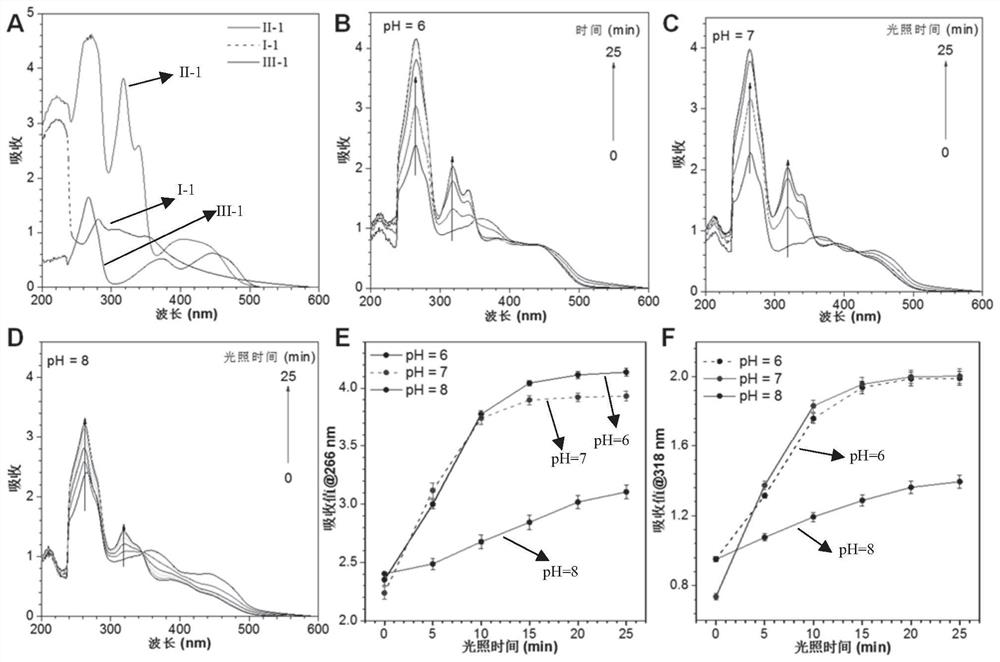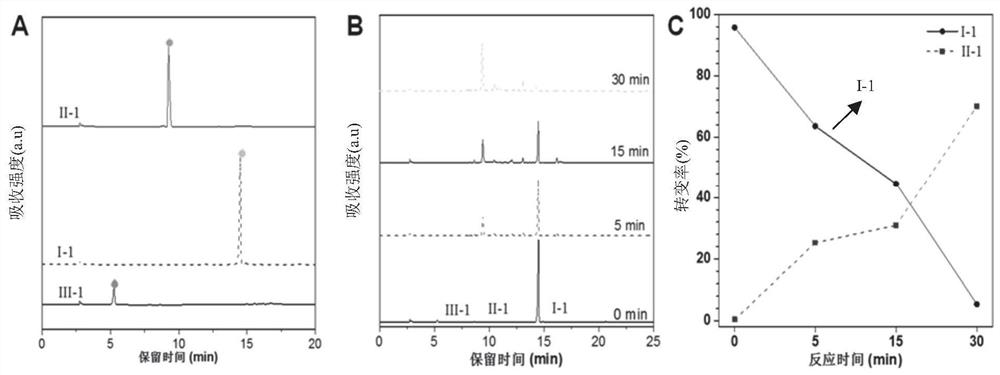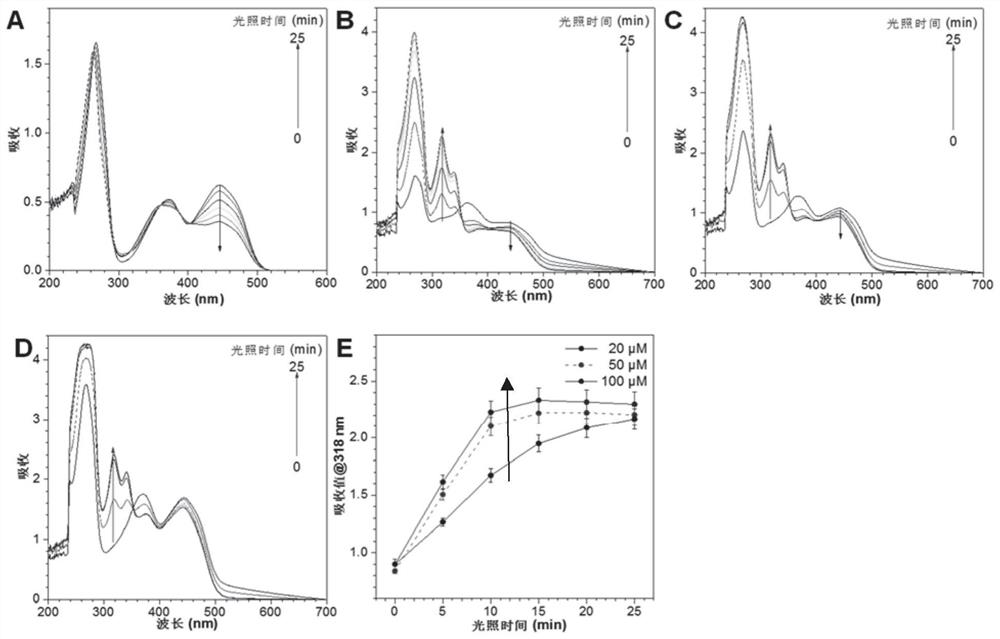Method for activating anti-tumor compound through biological orthogonal photocatalytic oxidative dehydrogenation, composition and application
A photocatalytic oxidation and bioorthogonal technology, applied in the field of medical materials, can solve the problems of the need to improve the activation efficiency and the activation wavelength is short, and achieve the effect of excellent anti-cancer effect, long excitation wavelength and high photoactivation efficiency.
- Summary
- Abstract
- Description
- Claims
- Application Information
AI Technical Summary
Problems solved by technology
Method used
Image
Examples
Embodiment 1
[0057] Dihydrophenanthridine alkaloids are compound I-1 (dihydrochelerythrine); compound I-1 is prepared by reducing chelerythrine hydrochloride:
[0058] Chemical I-1: Dihydrochelerythrine, structural formula:
[0059]
[0060] Chelidonium hydrochloride, structural formula:
[0061]
[0062] Dihydrochelerythrine can be prepared by reduction of chelerythrine hydrochloride: the compound chelerythrine hydrochloride (100mg, 0.25mmols) was dissolved in 15mL methanol solution, and sodium borohydride (80mg, 2.16mmols) was added , after 30 minutes of stirring in the dark at room temperature, stop the reaction, spin evaporate, wash the solid with ultrapure water, centrifuge and discard the supernatant, repeat the washing and centrifugal operation three times, dry in vacuo, and obtain the white solid product dihydrochelerythrine (90mg , yield: 90%).
Embodiment 2
[0064] Screening of photocatalysts for photocatalytic oxidative dehydrogenation:
[0065] Add compound I-1 (dihydrochelerythrine) and photocatalyst 111 to the solution of water: dimethyl sulfoxide (99:1, v / v) respectively, irradiate with desk lamp (white light), and in air The irradiation time is 30 minutes to obtain dehydrogenation compound II-1 (chelerythrine).
[0066] Photocatalyst III is used as a catalyst for photocatalytic oxidative dehydrogenation reaction, and photocatalyst III is more than one of the following compounds;
[0067]
[0068] Preferably, the photocatalyst is riboflavin (III-1):
[0069]
[0070] The structure of the dehydrogenation compound is formula II-1:
[0071]
[0072] After photooxidative dehydrogenation of compound I-1, the dehydrogenated compound is formula II-1, X - Provides anions for the medium.
Embodiment 3
[0074] Using riboflavin (III-1) as a photocatalyst, the photophysical properties of compound I-1 (dihydrochelerythrine) transformed into dehydrogenated compounds were characterized:
[0075] figure 1 It is the ultraviolet-visible absorption spectrogram of compound I-1, II-1 (chelerythrine hydrochloride) and III-1 in the buffer solution, and the mixture of I-1 and III-1 changes with time in different pH buffer solutions The change diagram of the UV-visible absorption spectrum and the variation diagram of the absorption value at the characteristic absorption peak with time.
[0076] figure 1 In (A) compound I-1 (10 -4 mol L -1 ), II-1 (chelerythrine hydrochloride) (10 -4 mol L -1 ) and III-1 (5*10 -5 mol L -1 ) UV-visible absorption spectrum in the buffer solution; (B) compound I-1 (10 -4 mol L -1 ) and III-1 (5*10 -5 mol L -1 ) the UV-Vis absorption spectrum of the mixture in the buffer solution (pH=6.0) changes with the light time; (C) compound I-1 (10 -4 mol L -1...
PUM
 Login to View More
Login to View More Abstract
Description
Claims
Application Information
 Login to View More
Login to View More - R&D
- Intellectual Property
- Life Sciences
- Materials
- Tech Scout
- Unparalleled Data Quality
- Higher Quality Content
- 60% Fewer Hallucinations
Browse by: Latest US Patents, China's latest patents, Technical Efficacy Thesaurus, Application Domain, Technology Topic, Popular Technical Reports.
© 2025 PatSnap. All rights reserved.Legal|Privacy policy|Modern Slavery Act Transparency Statement|Sitemap|About US| Contact US: help@patsnap.com



